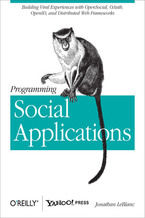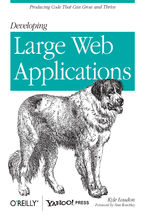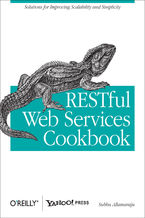
Building Web Reputation Systems Randy Farmer, Bryce Glass




- Autorzy:
- Randy Farmer, Bryce Glass
- Wydawnictwo:
- Yahoo Press
- Ocena:
- Stron:
- 336
- Dostępne formaty:
-
ePubMobi
 opcje wysyłki »
opcje wysyłki »
Opis
książki
:
Building Web Reputation Systems
What do Amazon's product reviews, eBay's feedback score system, Slashdot's Karma System, and Xbox Live's Achievements have in common? They're all examples of successful reputation systems that enable consumer websites to manage and present user contributions most effectively. This book shows you how to design and develop reputation systems for your own sites or web applications, written by experts who have designed web communities for Yahoo! and other prominent sites.
Building Web Reputation Systems helps you ask the hard questions about these underlying mechanisms, and why they're critical for any organization that draws from or depends on user-generated content. It's a must-have for system architects, product managers, community support staff, and UI designers.
- Scale your reputation system to handle an overwhelming inflow of user contributions
- Determine the quality of contributions, and learn why some are more useful than others
- Become familiar with different models that encourage first-class contributions
- Discover tricks of moderation and how to stamp out the worst contributions quickly and efficiently
- Engage contributors and reward them in a way that gets them to return
- Examine a case study based on actual reputation deployments at industry-leading social sites, including Yahoo!, Flickr, and eBay
Yahoo Press - inne książki
Dzięki opcji "Druk na żądanie" do sprzedaży wracają tytuły Grupy Helion, które cieszyły sie dużym zainteresowaniem, a których nakład został wyprzedany.
Dla naszych Czytelników wydrukowaliśmy dodatkową pulę egzemplarzy w technice druku cyfrowego.
Co powinieneś wiedzieć o usłudze "Druk na żądanie":
- usługa obejmuje tylko widoczną poniżej listę tytułów, którą na bieżąco aktualizujemy;
- cena książki może być wyższa od początkowej ceny detalicznej, co jest spowodowane kosztami druku cyfrowego (wyższymi niż koszty tradycyjnego druku offsetowego). Obowiązująca cena jest zawsze podawana na stronie WWW książki;
- zawartość książki wraz z dodatkami (płyta CD, DVD) odpowiada jej pierwotnemu wydaniu i jest w pełni komplementarna;
- usługa nie obejmuje książek w kolorze.
Masz pytanie o konkretny tytuł? Napisz do nas: sklep@helion.pl
Książka drukowana


















Oceny i opinie klientów: Building Web Reputation Systems Randy Farmer, Bryce Glass
(0)